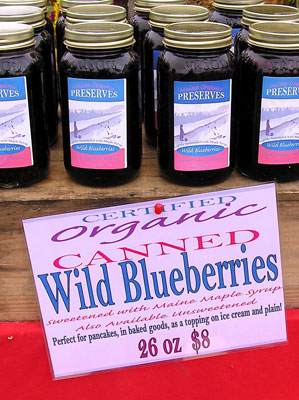 |
| Many fruits grow in Maine and can be preserved easily. Grow your own or purchase produce at farmers’ markets or at the Common Ground Fair for making low- or no-sugar jams and jellies. English photos. |
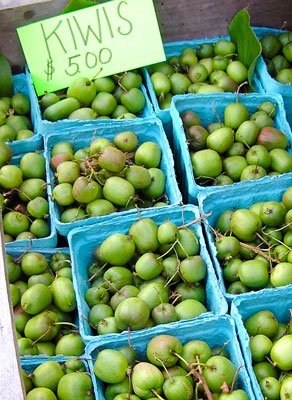 |
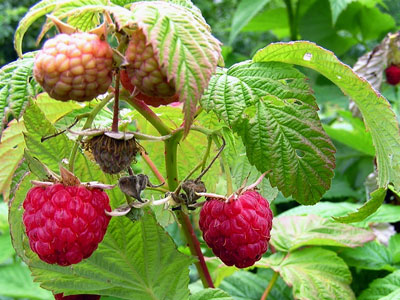 |
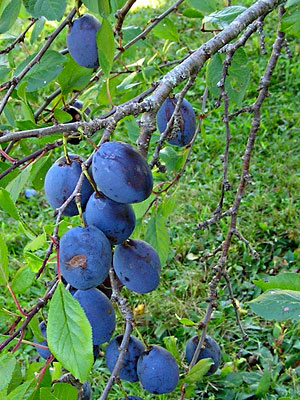 |
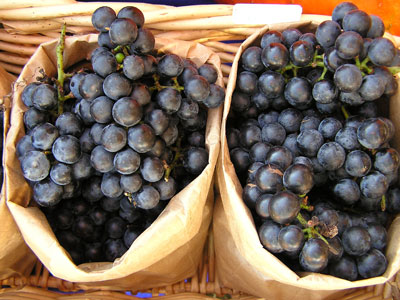 |
By Roberta Bailey
From spring through fall, Maine cranks out the fruit. Our winter weary palates get shocked awake with rhubarb. In June, our eyes roll back with the divine perfection of sun-ripened strawberries. July brings on a rush of fleeting pleasures with raspberries, mulberries, gooseberries, sour cherries, currants and blueberries. In August, the blueberries continue, and fall raspberries, peaches and plums join the earliest ripening apples. September holds grapes, pears, apples, hardy kiwis and cranberries in her arms of plenty.
Anyone interested in preserving such bounty can be kept busy from May through October. Preservation methods are as varied as the fruits themselves. Recipes for traditional methods of preserving often call for as much or more sugar than fruit. Here are some variations that use little or no sugar.
Drying Fruits
Drying fruits preserves all the nutrients and concentrates their natural sweetness. Slice fruits about 1/8-inch thick and place the slices on racks to dry in a dehydrator or in a sunny, well-ventilated greenhouse or other place where they will dry quickly. Some fruits can be strung and hung to dry.
Blueberries, if not dried in a dehydrator, actually dry faster with a solid surface below them, versus a screen.
The key to quality is quick drying. Fruits are dry when their centers are no longer moist, but have a chewy, dried texture.
Freezing Fruits
Freezing fruits and berries is simple. Slice large fruits to the desired size, place them in bags and freeze them. To avoid clumping, soft berries can be spread on baking sheets and frozen, then bagged. I often freeze berries in bulk in the heat and business of summer, then take them out to make jams, fruit butter or mixed berry applesauce in the fall when I have more time and the house needs a little heat. I label the freezer bags with the number of cups of berries in them.
Canning
Canning fruits is also simple. Fill clean jars with uncooked fruits to within 1 inch of the top rim. Add sweetener of any kind, to taste. Fill the jars with boiling hot water to within 1/2 inch of the top rim. Remove air bubbles with a clean knife. Wash the rim. Screw on the canning jar lid and seal. Process the jars in a boiling water bath for the recommended time, then remove them from the bath and cool them.
Fruit butters are a divine labor of love. Fruit must be skinned first or cooked and run through a sieve to remove skins. Berries should be put through a sieve if seeds need to be removed. Mash or puree the product into a smooth sauce. Place the sauce in nonreactive stainless or glass baking pans. Bake at 250 F for many hours, stirring every hour or two. The butter is ready when no fluid runs out of it. Can or freeze it at that point. To can, fill jars to within 1/2 inch of the rim. Clean the rim and attach the lids. Process the jars in a water bath for 10 minutes, then remove and cool them. To freeze, fill freezer containers, leaving about 1 inch for expansion, and freeze. Wide mouth canning jars can be used for freezing.
Jams and jellies can be made with little or no sugar, or with honey, maple syrup or other natural sweeteners. Low methoxyl pectin, derived from citrus peel (available in health food stores or on the Internet as Pomona’s Universal Pectin) gels with a calcium phosphate solution instead of large amounts of sugar. The pectin and calcium powder come in separate packets. The pectin is mixed with the fruit, and the calcium is added to water to make a solution that is added to the jam or jelly after it is cooked. Calcium causes the fruit to thicken.
Basic Steps for Jam or Jelly
Mash the fruit and put it through a sieve to remove seeds if necessary or desired. Or prepare juice for jelly. Measure the amount and heat the sieved fruit or the juice until it boils. Thoroughly mix measured amounts of pectin into honey or sugar (see below) and whisk the mix into the juice or fruit, being sure the pectin does not clump. Bring the mix to a boil again and add the correct amount of calcium water. Then pour the product into sterile jars to can or into jelly jars to freeze. The jam thickens as it cools. Let a teaspoon of jam or jelly cool to test it for thickness. If it’s not thick enough, add more calcium solution and test again.
For jams, use 1/2 to 3/4 tsp. pectin per cup of mashed fruit; 1/4 to 1/2 c. sugar per cup of fruit; or 1/8 to 1/3 c. honey or other natural sweeteners; and use 1 tsp. of calcium water per cup of fruit.
For jellies, use 3/4 to 1 tsp. pectin per cup of juice, and sweeteners and calcium solution as for jam, above.
To use stevia, prepare your fruit or juice as above, sweetening it to taste, but incorporate the pectin by blending it with 3/4 c. boiling water for 1 to 2 minutes before stirring it into the fruit or juice.
To make jam or jelly using mixtures of fruits, use the above method, blending pectin into boiling water, fruit juice or cider.
To make calcium water, mix 1/2 c. water with 1/2 tsp. mono-calcium phosphate. You may halve or double the quantity as needed.
To can, fill pint or half-pint jars to within 1/2 inch of the top of the canning jar, screw on the two-piece lids and place the jars in a boiling water bath for 5 minutes. Remove them from the water and let them cool. Check to be sure the seal is depressed.
Jam lasts about three weeks in the refrigerator once it’s opened.
Pomona’s Universal Pectin is available in health food stores in 1-ounce boxes that make 15 to 18 cups of jam or jelly. Each box contains a packet of pectin derived from citrus peel and mono-calcium phosphate. The pectin is also available from www.pomonapectin.com for $30.15 for 1/2 pound; $49.70 per pound; or individual boxes for $5.75, shipping and handling included. Pomona’s website also has numerous recipes for jams and jellies.
